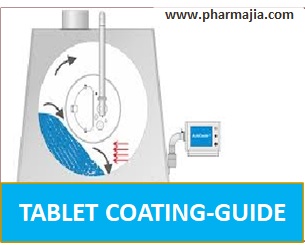Fluid Bed Processor – A comphrensive Guide
This article describes the information on Fluid Bed Processor i.e. its operations, working principle, Types of fluid bed processors, Basic components, Applications, Advantages and Disadvantages. Moreover FAQs with answers are also enlisted below.
What is mean by Fluid Bed Processor and its Working Principle ?
The fluid bed processor used in the pharmaceutical manufacturing for various processes such as Granulation,Drying and Coating too. This technology is flexible, effective and capable of processing a diverse range of materials and delivering consistent high-quality products.
The working principle of the fluidized bed processor is based on the fluidization of solid particles by a hot air stream. When the air flow rate is sufficient to overcome the gravitational forces acting on the particles, they become suspended in the gas stream and behave like a fluid.
Fluidised bed processors consist of a container filled with solid particles that are fluidized by a Hot air stream, The solid particles behave like a fluid and provide a large surface area for contact with the air stream, resulting in efficient heat and mass transfer. The air stream can be heated or cooled to control the temperature of the process.
The solid particles in the fluid bed processor can be of various sizes and shapes, depending on the application. The fluid bed processor can be designed to handle a wide range of materials, including powders, granules, pellets, and tablets.
Types of fluid bed processors
There are two main types of fluid bed processors used in the pharmaceutical industry,
Top Spray Fluid Bed Processor
The Top Spray Fluid Bed Processor is used for the granulation of powders. In this type of processor, the spray nozzle is located above the bed of solid particles, and the liquid binder is sprayed onto the particles from the top. The binder solution wets the particles and causes them to agglomerate, forming granules.
Bottom Spray Fluid Bed Processor
The Bottom Spray Fluid Bed Processor is used for coating of particles or pellets. In this type of processor, spray nozzle is located at the bottom of the container and the particles are suspended in air stream. The liquid coating material is sprayed onto the particles from the bottom, and air stream carries the particles upward, allowing the coating, adhere and dry the particles/pellets.
Generally Bottom Spray Fluid Bed Processor also termed/Called as Wurster Coater.
Basic Components of Fluid Bed Processors :
Fluid bed processors consist of several essential components that work together for efficiently processing of materials. Here are some of the basic major components enlisted
- Product container and Expansion chamber : This is a chamber where the processing takes place. It is designed to allow air to flow through the material being processed.
- Air handling system: This system provides necessary airflow to the fluid bed through inlet ducting’s systems and consists of a blower, filter, and ducting and expels the air and removes the moisture, dust generation during process trough Exhaust system.
- Spraying System/Assembly : Fluid bed processors may include a spraying assembly for addition of binder on the flid bed during processing to form the agglomerates/Granules. It is Detachable assembly and different diameter’s spry nozzles used as per product requirement to process the material.
- Inlet Air Temperature / Humidity Control: This component helps to regulate the temperature and Humidity of the incoming air to the fluid bed. It may consist of a heater, chiller, or both.
- Exhaust system: This component removes the moisture and dust generated during processing. It consists of a fan, filter, and ducting.
- Control system: This system regulates the various parameters of the fluid bed processor, such as inlet air temperature, airflow rate, and processing time.
Advantages of fluidised bed processors
Fluidised bed processors have several advantages over traditional granulating processing methods in the pharmaceutical industry those are as below ,
Efficient Heat and Mass Transfer
The Fluidised Bed Processor provides a large surface area for contact between the solid particles and the gas stream, resulting in efficient heat and mass transfer. This leads to faster drying, granulation, and coating processes, and a more uniform product.
Control over Process Parameters :
Fluidised bed processors offer precise control on process parameters such as temperature, air flow rate and Binder flow rate. This allows for a more consistent product and can reduce process variability.
Closed Loop Operation :
Fluidised bed processors can perform multiple processing steps in a single unit, such as Granulation and drying or Coating and drying, which can reduce the required equipment footprint and increase efficiency.
Improved Product Quality:
Fluidised bed processors can produce high-quality products with consistent properties, such as particle size, density, and flowability. This can lead to improved product performance and reduced variability.
Disadvantages of Fluidised Bed Processors
Inspite their many advantages, fluidised bed processors also have some disadvantages enlisted as below
High initial investment :
It can be expensive to purchase and install, requiring specialized equipment and skilled operators.
Complexity :
It can be more complex than traditional processing methods, requiring a thorough understanding of the equipment and process parameters.
Material limitations :
It may not be suitable for all materials, as some materials may not fluidize properly, Settling down or may be subject to degradation or attrition in the fluidized bed.
Applications of Fluid bed processors in the pharmaceutical industry
Fluidised bed processors have a wide range of applications in the pharmaceutical industry, including:
Granulation and Drying of Granules/Powders :
Fluid bed processors can be used to granulate powders and drying of granules or powder by removing residual moisture, producing uniform and free-flowing granules that can be compressed into Tablets or can be filled in Capsules.
Coating of particles/Pellets
Fluid bed processors can be used to coat particles/Pellets, producing a uniform, Free flowing and controlled/Delayed release profile for drugs.
8. Frequently Asked Questions (FAQs) :
What materials can be processed in a Fluid bed processor?
It can handle a wide range of materials, including powders, granules, pellets.
What are the main types of fluid bed processors?
The main types of processors are top spray and bottom spray
What are the advantages of Fluid bed processors?
It offer several advantages includes, efficient heat and mass transfer, control over process parameters, Closed operations and improved product quality.
What are the disadvantages of Fluid bed processors?
The disadvantages of processors include high initial investment, complexity, and material limitations.



